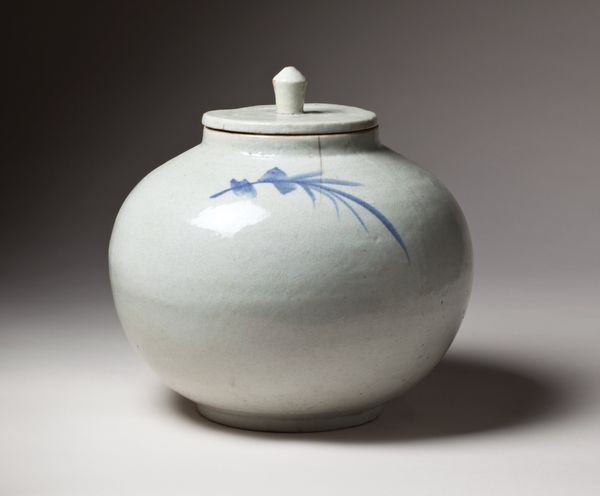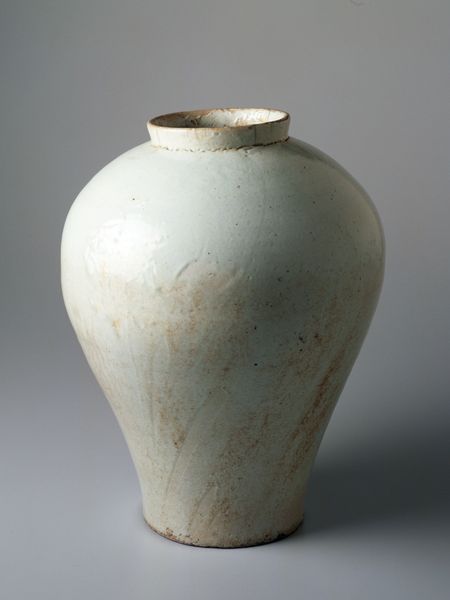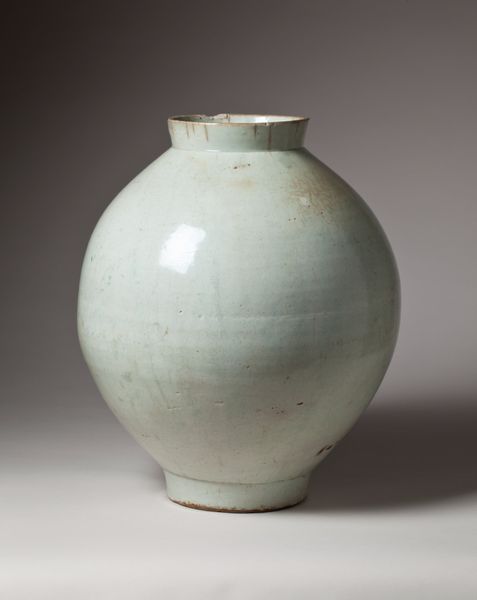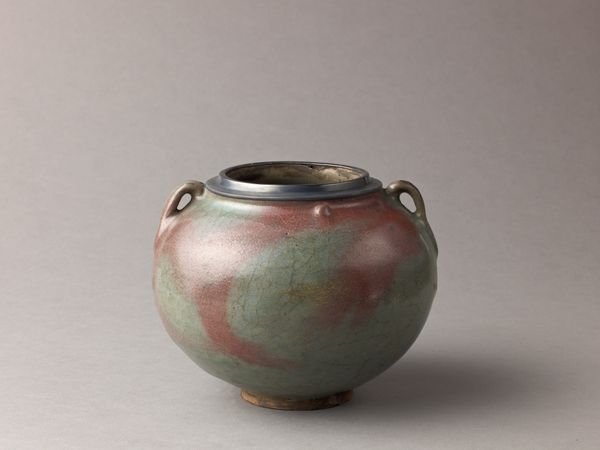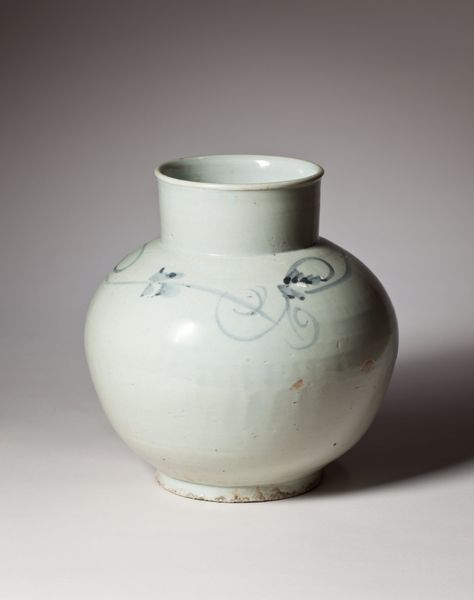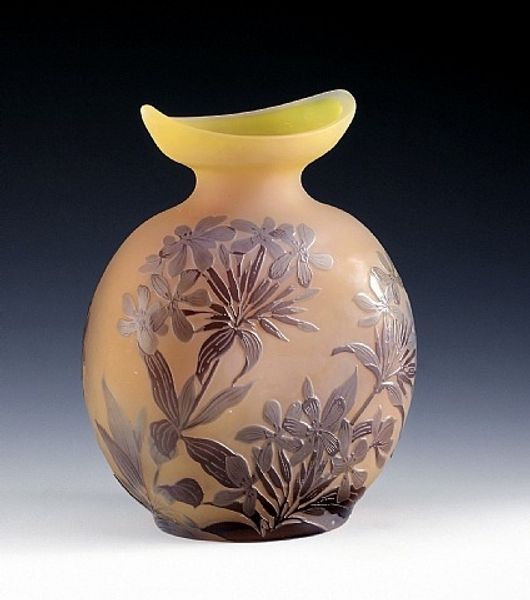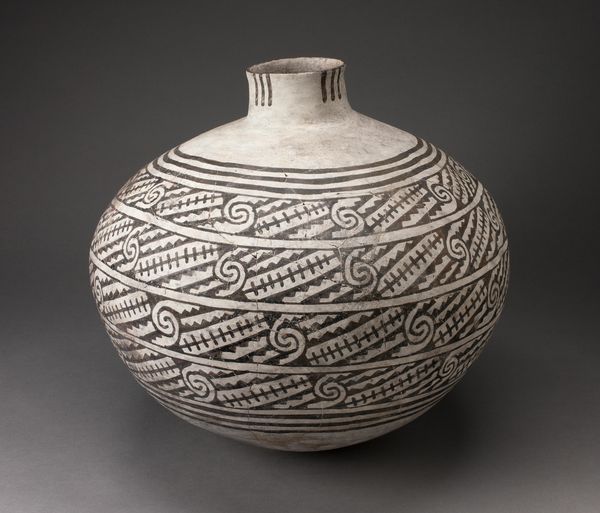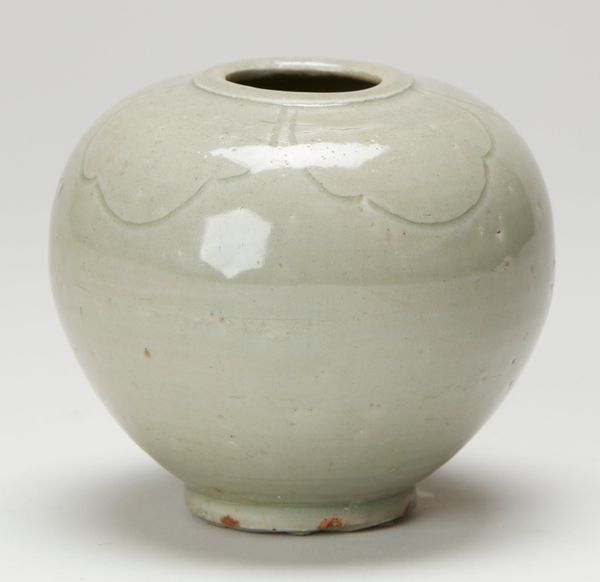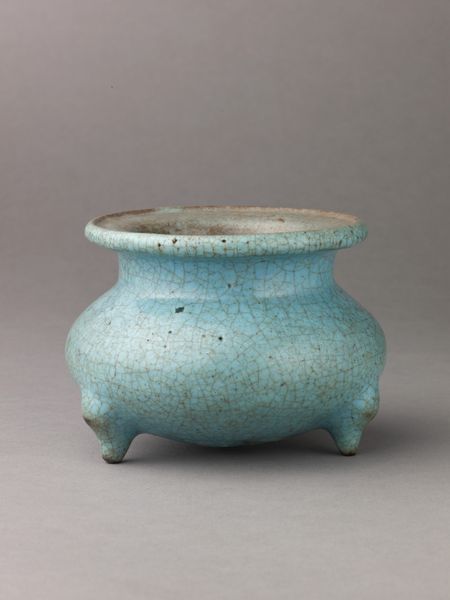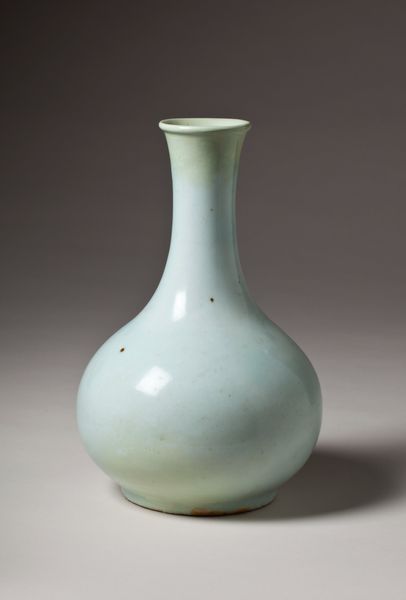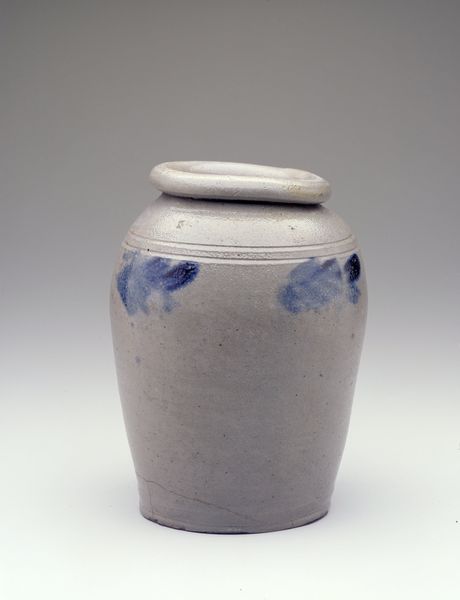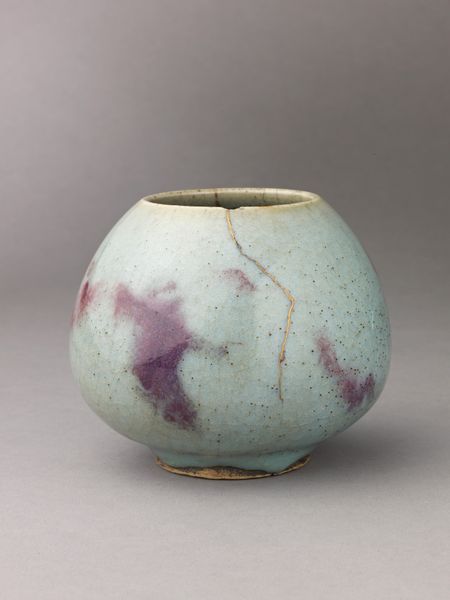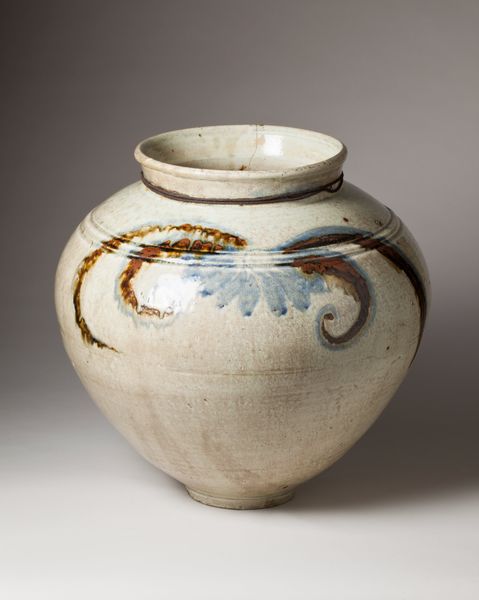
Rice-Bale Shaped Bottle with Waterfowl and Grasses c. 18th century
0:00
0:00
ceramic, porcelain
#
asian-art
#
landscape
#
ceramic
#
porcelain
#
sculptural image
#
ceramic
#
decorative-art
Dimensions: 6 1/4 x 6 3/4in. (15.9 x 17.1cm)
Copyright: Public Domain
Curator: Here we have a fascinating piece: a ceramic bottle from the 18th century, specifically a "Rice-Bale Shaped Bottle with Waterfowl and Grasses." It resides here at the Minneapolis Institute of Art and gives us a peek into Asian decorative arts. Editor: It's deceptively simple. That muted celadon glaze and the minimalist carving almost give it a meditative quality. I wonder how this piece communicates the cultural or social contexts of its time. Curator: The form itself is very interesting, isn't it? The rice bale shape could reference the importance of agriculture and rice cultivation in society and economy during the period. The scenes of waterfowl and grasses would’ve been viewed, likely, as harmonious and reflective of prosperity. Editor: It's a statement about the idealized life, the bounty that sustains society. And the rice bale form could also hint at hierarchies surrounding agricultural wealth, a critical commentary embedded within the decorative object? Who produced this, for what audiences, and with what social message in mind? Curator: Very true, there's so much we don’t know about the artist. What we do understand is that this kind of porcelain production would likely have been commissioned by someone with means, a member of the literati perhaps, demonstrating sophisticated tastes. Editor: I appreciate how unassuming it appears at first glance, yet, the craftsmanship is stunning, isn’t it? The subdued color palette feels so contemporary while connecting to the past, reflecting harmony and perhaps a touch of aspiration towards balance in life. Curator: The very essence of decorative arts in many respects - reflecting back what is deemed culturally valuable, literally shaped into the everyday object. Editor: For me, it underscores art's capacity to hold stories and subtly influence its cultural surroundings. That silent observation becomes, over time, a part of how we experience history, culture, and identity. Curator: Absolutely. It reminds us how functional items, far from being simply utilitarian, engage in intricate dialogues about values, status, and artistry. Editor: Definitely a bottle brimming with more than just water then! Curator: Indeed!
Comments
No comments
Be the first to comment and join the conversation on the ultimate creative platform.
